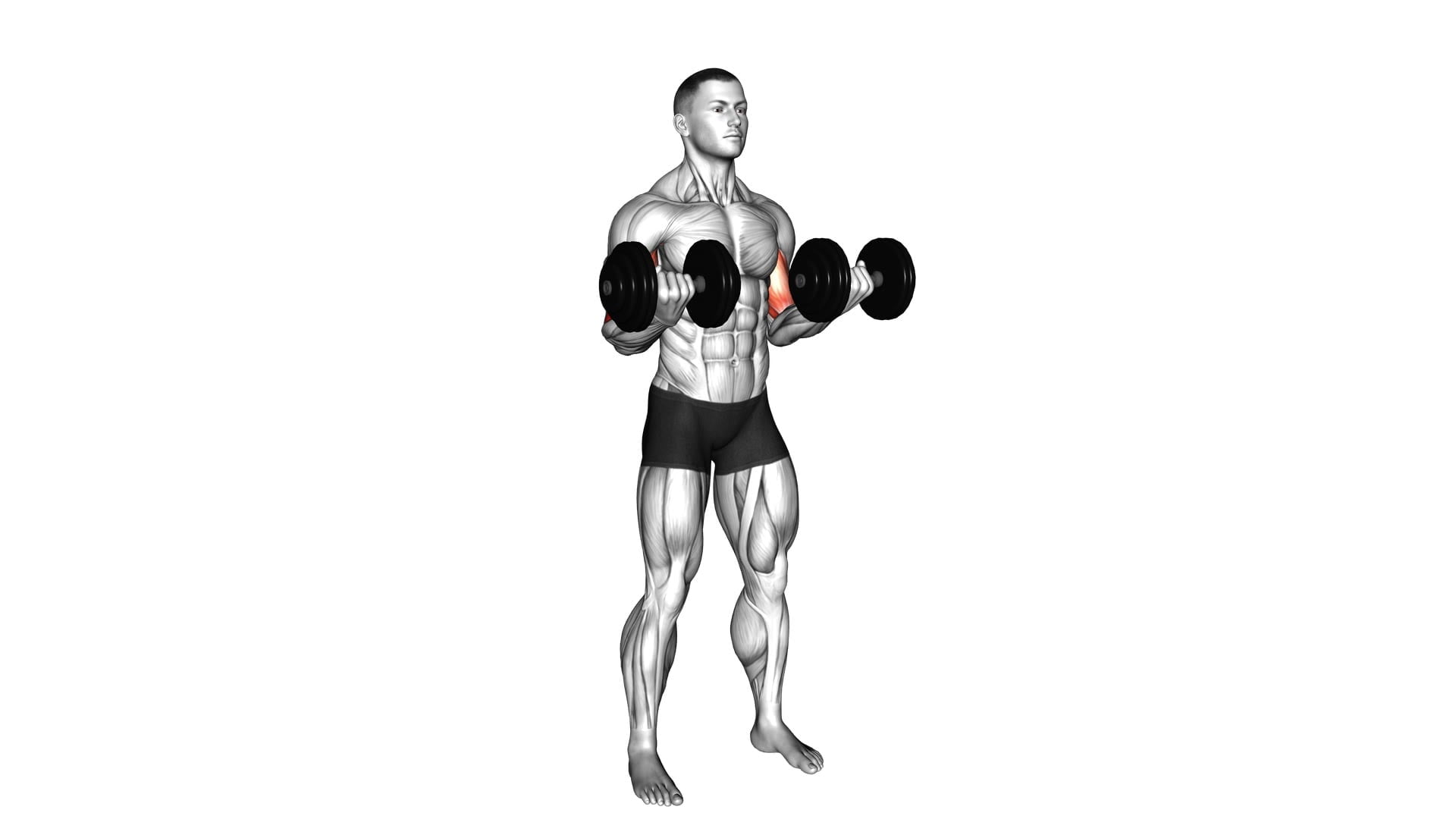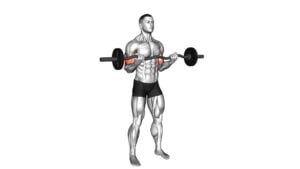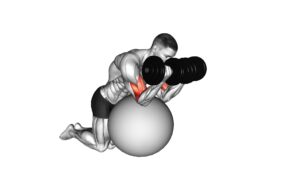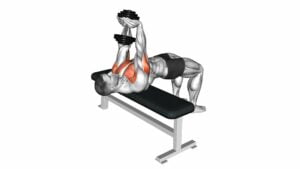Dumbbell 21s – Video Exercise Guide & Tips

Looking to amp up your arm workout? Check out our video exercise guide for Dumbbell 21s!
Watch This Exercise Video
This quick and effective routine targets your biceps for maximum gains. We'll show you proper form and technique, help you choose the right weight, and provide variations and progressions to keep challenging yourself.
Plus, we've got tips to help you maximize your results.
Get ready to feel the burn and see the results with Dumbbell 21s!
Key Takeaways
- Dumbbell 21s can improve muscular endurance and bicep strength.
- They are effective for overall strength improvement and muscle size building.
- Dumbbell 21s target the biceps for strong and defined arms.
- Using the proper form and technique is crucial to maximize the benefits of Dumbbell 21s.
Benefits of Dumbbell 21s
The benefits of Dumbbell 21s include increased muscular endurance and improved bicep strength. By incorporating this exercise into your routine, you can effectively improve your overall strength and build muscle size. Dumbbell 21s are a highly effective exercise that targets the biceps, helping you to develop strong and defined arms.
When performing Dumbbell 21s, you start by completing seven partial reps from the bottom of the movement to the halfway point. This challenges your muscles and improves muscular endurance. Next, you do seven partial reps from the halfway point to the top of the movement, focusing on the bicep contraction. Finally, you complete seven full reps, working the entire range of motion.
This exercise is particularly beneficial for building muscle size because it recruits a larger number of muscle fibers in the biceps. The variation in partial and full reps ensures that you're targeting different areas of the muscle, leading to increased muscle growth.
Incorporating Dumbbell 21s into your workout routine can help you achieve your goals of improving strength and building muscle size. Remember to start with a weight that challenges you but allows for proper form. As you progress, gradually increase the weight to continue challenging yourself and stimulating muscle growth.
Proper Form and Technique
To ensure proper form and technique when performing Dumbbell 21s, how should you position your body and grip the dumbbells?
- Stand with your feet shoulder-width apart and maintain a slight bend in your knees. Keeping your core engaged and your back straight will help maintain stability throughout the exercise.
- Hold the dumbbells with an underhand grip, ensuring that your palms are facing upward. Your hands should be shoulder-width apart to provide optimal control and stability.
Throughout the exercise, maintain a controlled and smooth motion. Avoid using momentum or swinging the weights, as this can lead to improper form and potential injury.
Proper form and technique are crucial for maximizing the benefits of Dumbbell 21s and minimizing the risk of common mistakes and injuries. One common mistake is using too much weight, which can compromise your form and put excessive strain on your muscles and joints. Start with lighter weights and gradually increase as you become more comfortable and confident with the exercise.
Another common mistake is lifting the weights too quickly. Remember to maintain a slow and controlled motion throughout the entire range of motion.
Finally, be mindful of any discomfort or pain during the exercise. If you experience any unusual pain or discomfort, stop immediately and consult with a fitness professional or healthcare provider.
Choosing the Right Weight
When selecting the appropriate weight for Dumbbell 21s, consider your current strength level and ability to maintain proper form and technique. Choosing the right weight is crucial to ensure that you're challenging your muscles without compromising your form.
One of the most common mistakes people make is selecting a weight that's too heavy, leading to poor form and potential injury. On the other hand, using a weight that's too light may not provide enough resistance to effectively work your muscles.
To find the right weight, start with a weight that you can comfortably lift for 10-12 repetitions with proper form. As you progress and become stronger, gradually increase the weight to continue challenging your muscles. It's important to note that everyone's strength level is different, so what may be challenging for one person may not be for another.
Listen to your body and make adjustments accordingly. Remember, the goal is to find a weight that allows you to complete the exercise with proper form while still feeling challenged.
Variations and Progressions
To further challenge your muscles and continue progressing in your Dumbbell 21s routine, there are various variations and progressions you can incorporate. Here are three options to consider:
- Advanced Modifications: Once you have mastered the basic Dumbbell 21s, you can increase the difficulty by using heavier weights. This will put more strain on your muscles, forcing them to adapt and grow stronger. Additionally, you can try performing the exercise on an unstable surface, such as a stability ball, to engage your core and improve balance.
- Partial Range of Motion: Instead of completing the full range of motion for each set, you can focus on specific portions to target different muscle groups. For example, you can perform the first seven reps with a partial range of motion that emphasizes the lower portion of the curl, then switch to a partial range of motion that emphasizes the upper portion for the next seven reps. This variation allows you to isolate and strengthen different parts of the muscle.
- Eccentric Training: Eccentric training involves focusing on the lowering phase of the exercise. Instead of simply dropping the weight, control the descent and make it slower and more controlled. This places greater stress on the muscle fibers, leading to increased strength and muscle growth.
Tips for Maximizing Results
To further enhance your results and optimize your gains, it's crucial that you implement these effective tips into your Dumbbell 21s routine. By avoiding common mistakes and following the recommended sets and reps, you can maximize your workout and achieve your desired results more efficiently.
One common mistake to avoid is using improper form. When performing Dumbbell 21s, it's essential to maintain proper posture and technique throughout the exercise. This means keeping your back straight, shoulders back, and core engaged. By doing so, you'll target the intended muscle groups and minimize the risk of injury.
Additionally, it's recommended to start with lighter weights and gradually increase the resistance as you progress. This will allow you to perform the exercise with control and proper form. It's generally advised to start with 2-3 sets of 8-12 reps, gradually increasing the sets and reps as you build strength and endurance.
It is also important to listen to your body and give yourself enough time to recover between workouts. Overtraining can hinder your progress and increase the risk of injury. Aim to incorporate Dumbbell 21s into your routine 2-3 times per week, allowing for adequate rest days in between.
Frequently Asked Questions
How Many Sets and Repetitions Should I Do When Performing Dumbbell 21s?
When performing dumbbell 21s, it's important to consider the number of sets and repetitions.
To properly perform this exercise, start with seven half reps from the bottom to the mid-range of the movement. Follow this with seven half reps from the mid-range to the top. Finally, complete seven full range of motion reps.
Aim for 3-4 sets of 21s, with a moderate weight that challenges your muscles.
Avoid common mistakes like using momentum or sacrificing form for heavier weights.
Can I Use Dumbbell 21s as a Standalone Exercise or Should I Incorporate Them Into a Larger Workout Routine?
Dumbbell 21s can be used as a standalone exercise or incorporated into a larger workout routine. When used as a standalone exercise, the benefits include targeting multiple muscle groups in the arms and improving strength and definition.
However, incorporating 21s into a full body routine can provide a more well-rounded workout and help you achieve overall muscle development.
It's important to consider your fitness goals and consult with a trainer to determine the best approach for your individual needs.
Are Dumbbell 21s Suitable for Beginners or Should They Only Be Performed by More Advanced Lifters?
Dumbbell 21s can be suitable for beginners as long as they start with lighter weights and focus on proper form. These exercises offer a range of benefits for overall strength, including targeting multiple muscle groups and improving muscular endurance.
However, it's important to gradually increase the weight and intensity as you progress to avoid injury. Incorporating dumbbell 21s into a larger workout routine can help maximize their effectiveness and overall fitness gains.
Can Dumbbell 21s Help Me Build Muscle or Are They Primarily for Toning and Sculpting?
Dumbbell 21s can definitely help you build muscle. They aren't just for toning and sculpting. By incorporating dumbbell 21s into your workout routine, you can effectively target and strengthen your biceps.
The exercise involves performing three sets of seven reps with different ranges of motion. This variation challenges your muscles and promotes muscle growth.
Is It Necessary to Warm up Before Performing Dumbbell 21s, and if So, What Specific Warm-Up Exercises Should I Do?
Before performing dumbbell 21s, it's important to warm up to prevent injury and optimize your workout. Engaging in a dynamic warm-up routine can increase blood flow, loosen up your muscles, and enhance flexibility.
Consider exercises such as arm circles, shoulder rolls, and light weightlifting to prepare your upper body for the demands of dumbbell 21s. Incorporating these warm-up exercises can improve your performance and ensure a safer and more effective workout session.
Conclusion
In conclusion, incorporating dumbbell 21s into your exercise routine can provide numerous benefits, such as improved muscle strength and endurance.
By following the proper form and technique, selecting the appropriate weight, and progressing gradually, you can maximize your results and avoid potential injuries.
Remember to listen to your body and consult with a fitness professional if needed.
Stay consistent and dedicated to your workouts to achieve your fitness goals.

Author
Years ago, the spark of my life’s passion ignited in my mind the moment I stepped into the local gym for the first time. The inaugural bead of perspiration, the initial endeavor, the very first surge of endorphins, and a sense of pride that washed over me post-workout marked the beginning of my deep-seated interest in strength sports, fitness, and sports nutrition. This very curiosity blossomed rapidly into a profound fascination, propelling me to earn a Master’s degree in Physical Education from the Academy of Physical Education in Krakow, followed by a Sports Manager diploma from the Jagiellonian University. My journey of growth led me to gain more specialized qualifications, such as being a certified personal trainer with a focus on sports dietetics, a lifeguard, and an instructor for wellness and corrective gymnastics. Theoretical knowledge paired seamlessly with practical experience, reinforcing my belief that the transformation of individuals under my guidance was also a reflection of my personal growth. This belief holds true even today. Each day, I strive to push the boundaries and explore new realms. These realms gently elevate me to greater heights. The unique combination of passion for my field and the continuous quest for growth fuels my drive to break new ground.







